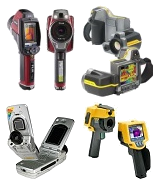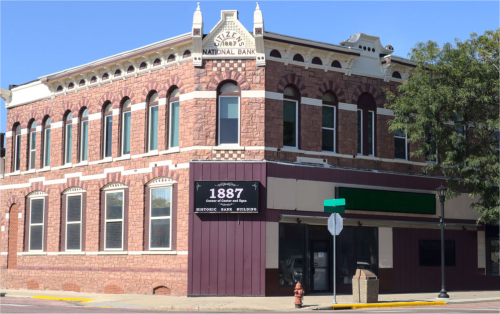![]()

 The leader in on-demand infrared training
The leader in on-demand infrared training
PROFESSIONAL INFRARED TRAINING INSTITUTE
Thermography Certification and Training Online
![]() Compare | Tour | FAQs | Account
Compare | Tour | FAQs | Account![]() 605-427-2908
605-427-2908
![]() Enroll Now
Enroll Now
 Buying an Infrared Camera
Buying an Infrared Camera
Many are in a rush to buy an infrared camera before they pursue training. With low prices for entry-level thermal
imaging cameras, it is tempting to shop for a cheap camera and not worry so much about missing important infrared
camera features. The right price is important, but equally important is whether the camera suits your thermography
needs.
In our experience, most thermographers wish they had waited to buy a camera until after they had completed Level
1 thermography training because the more you become involved with infrared thermography, the more you appreciate
the need for the right equipment to complete a good survey and produce an excellent report for your client. Not
only do thermographers wish they had the training first, but the training company will usually have contacts to
save you hundreds or thousands of dollars on the camera you want, hence you can get some or all of your training
money back in savings.
Below we have listed some of the most important camera features we recommend to our students who have completed
Level 1 and ask for infrared camera buying advice:
#1 Detector resolution
Detector resolution is the number of temperature-sensing pixels that make up the image that an infrared camera
generates. If you have been researching infrared training online, you have probably seen infrared images with all
different levels of resolution. An inexpensive infrared camera may capture a radiometric image that is only 80
x 60 pixels (4,800 pixels total). This resolution may be adequate when the target is large enough and you can get
close enough to it, but it won't work for all situations, and the infrared images you transfer to printed reports
will be fairly small and lack detail if enlarged. Greater detector resolution equals more accurate temperatures
for smaller targets at greater distances along with larger, clearer images to print in reports.
#2 Wide temperature range
Temperature range is the lowest and highest temperatures that a detector pixel array can register. Infrared cameras
may have a low and a high setting such as -4°F to +248°F and 32°F to +662°F. If you decide to perform
industrial surveys, you want to buy a camera that has the widest temperature range available, which makes the camera
useful for multiple applications and increases the camera's value as a diagnostic tool. A higher range is essential
for many electrical, mechanical, or refractory surveys.
#3 Output to standard JPEG
Standard JPEG's are universal image formats that can be opened by any image editor and pasted into any document.
Some infrared cameras require additional software in order to convert their proprietary radiometric image format
into a standard jpeg. While this isn't necessarily a deal-killer, it is certainly inconvenient.
#4 Integrated visual light camera
It is convenient to have an all-in-one thermal imaging camera that includes a built-in visible light camera because it
eliminates the hassle of carrying around a separate digital camera. It is a bonus to also have image fusion where
an infrared section is inset into a visual light image, creating a picture-in-picture effect.
#5 Interchangeable battery and memory
The ability to bring along extra batteries and memory cards is most appreciated during a long day when the infrared
camera has been used a lot, and there is no time to plug in a charging adapter or transfer images to your computer.
Some infrared cameras do not have either option.
#6 Good form factor
Infrared cameras are becoming more and more lightweight and ergonomic. The camera you choose should be a comfortable
fit, and there should be a mechanism or holster that allows you to carry it on your belt when your hands need to
be free.
#7 Other factors
Most infrared cameras come with some type of general post-processing software that allows you to change palettes,
locate pixel temperatures, or change emissivity. Look for a good included software package. Also, reliable technical
support from the manufacturer is very important if you have a problem with the camera down the road.
There are other important camera factors including thermal sensitivity, lcd screen size, operating temperature,
field of view, focal length, minimum focus distance, data interface, video capture ability, and dozens more, that
you should research before buying a camera. We encourage you to look at cameras from every manufacturer and to
physically test them before making a decision. While we do not sell infrared cameras ourselves, we are happy to
pass along our knowledge and school discounts if you decide to pursue training with us.
 Explore PMII's Training Options
Explore PMII's Training Options
©Professional Infrared Training Institute (PITI). All rights reserved.
PITI Office Hours: 8am - 8pm CST Mon.-Fri., 9am - 1pm Sat. Call 605-427-2908

![]()
101 Egan Ave N, Madison, SD 57042
Map it on Google
Mailing Address:
PO Box 303, Madison, SD 57042


![]()
